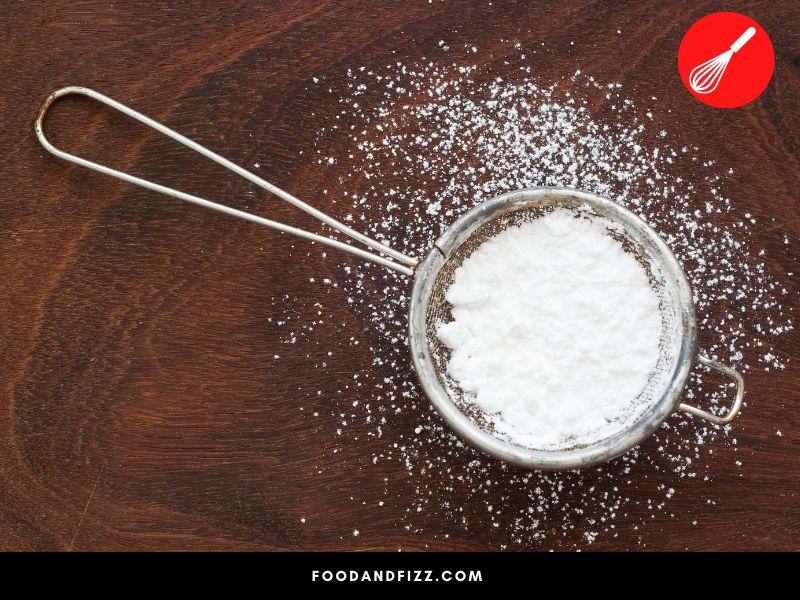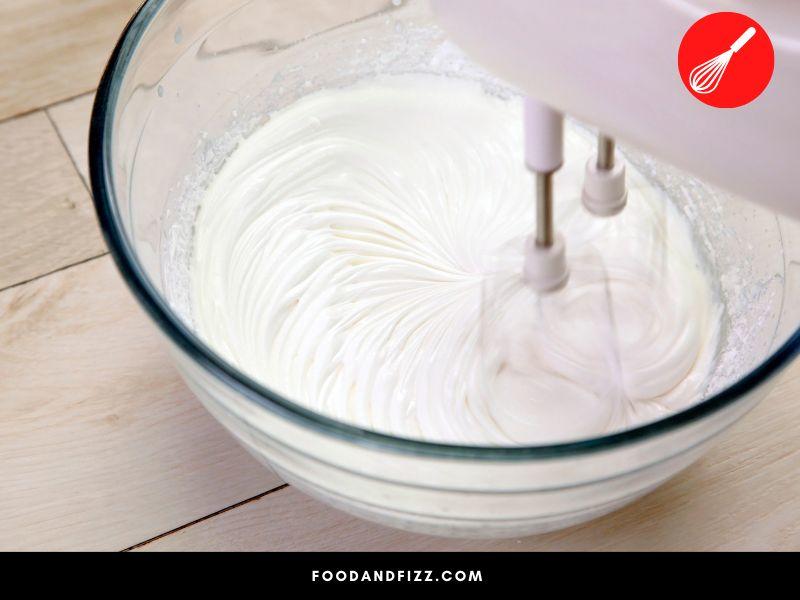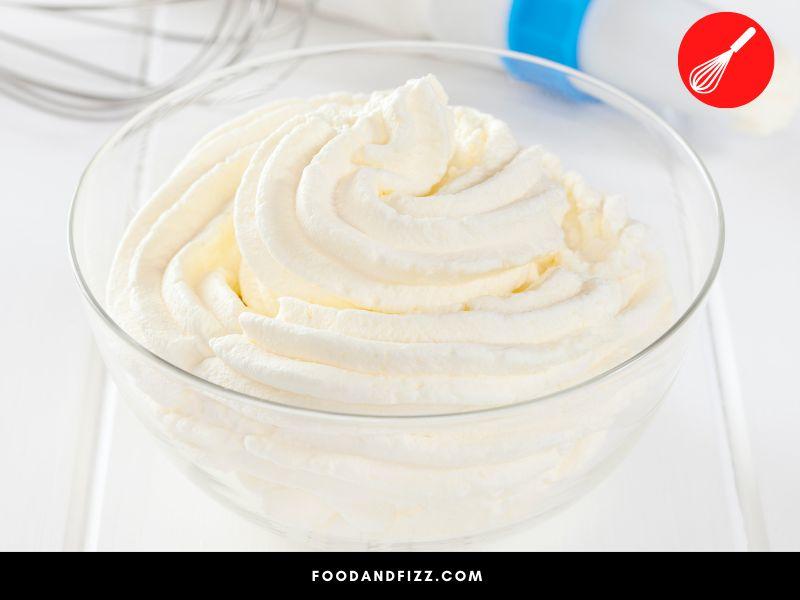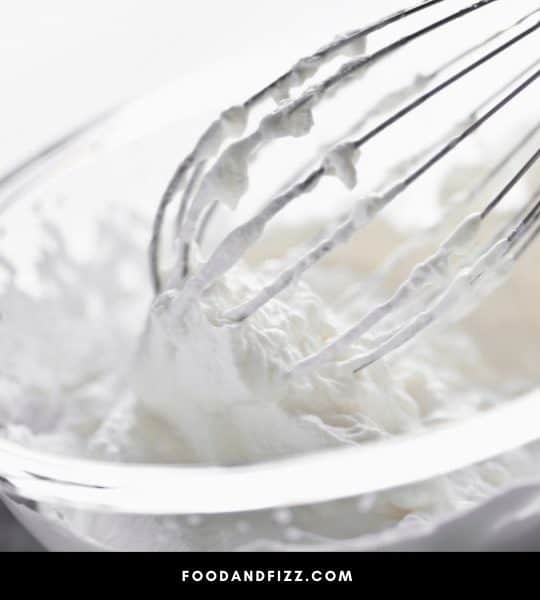Whipped cream is a heavy cream liquid that is well beaten to make it fluffy and light, thus forming a strong colloid. Whipped cream can be sweetened using sugar or flavored with various tastes. The cream has also been called Chantilly, aerosol, and squirty.
Does Whipped Cream Go Bad?
Whipped cream goes bad, but that could take from two days to three months, depending on storage conditions. If your homemade whipped milk is stabilized, it could last up to four weeks in the fridge, but it could last one day if not stabilized. The industrial-manufactured whipped cream can go for months if stabilized.

What Does Stabilizing of Whipped Cream Mean?
Stabilized whipped cream is a whipped cream that has been laced with unflavored powder gelatin to make it stiff. The whipping agent does not alter the shape of the cream for close to two days.
There are several benefits of stabilizing whipped cream, which include;
- Stiffening of the cream, thus making sure it retains the intended shape.
- It keeps the whipped cream from melting.
- It helps the whipped cream last longer, especially when refrigerated.

How Can I Stabilize My Whipped Cream?
I have always been a fan of whipped milk and can’t stand losing it! That’s why I focused on learning several ways to keep my cream in good shape.
Stabilizing the whipped cream is a top priority, and I don’t just have one trick to achieve this. If you love something, you have several techniques to achieve it, which is why I have several.
Here are a few methods I use to stabilize whipped cream.
1. Unflavored Gelatin
The technique is superbly my top choice! Besides increasing the shelf life of the whipped cream, it maintains the shape and stiffens the cream, thus preventing it from melting.
Nevertheless, despite being that good, it’s not something I would recommend for vegetarians. So, if you’re a veggie, you should probably try using some of these other stabilizing techniques explained below.
2. Powdered milk
This is another excellent technique that I consider significant in stabilizing my whipped cream. The beauty of using powdered milk is a two-leveled double advantage technique.
First, it contains some cornstarch, which is significant in stiffening the whipped cream.
Secondly, powdered milk comes with unique flavors that make the cream tastier.
3. Cornstarch
The approach works well! For home use, especially if a vegetarian, using cornstarch instead of gelatin is quite okay. It’s an easy technique that takes little time and is an understandable procedure.
4. Pudding mix
The mix includes several ingredients, including flavoring agents, cornstarch, sugar, and thickeners.
All the ingredients are crushed to powdered form before being mixed. It’s a good stabilizer to whipped cream as it prevents it from quickly melting, lasting longer.
5. Confectioners’ sugar
It is also known as powdered sugar. When mixed with potato starch or cornstarch, confectioners’ sugar makes one of the best stabilizers of whipped cream.
Besides, it also acts as a sweetener, thus the preference among different people.

What’s An Excellent Procedure for Stabilizing Whipped Milk?
Now that I have indicated the various ingredients I would use to stabilize my whipped milk giving it a longer life and flavor, here is a standard procedure.
The process is easy, simple, and fun! With all the available ingredients in your local grocery shop, I recommend you try it out, and you won’t regret it. Here is the procedure.
Ingredients
- A cup of heavy cream
- 2 tablespoons of confectioners’ sugar, pudding mix, cornstarch, powdered milk, or unflavored gelatin
- ½ teaspoon of vanilla or any flavoring agent
Procedures
- Step 1: Pour the whipping cream into a chilled bowl and whip for about 45 seconds to 1 minute.
- Step 2: Add either of the stabilizing agents above and continue whipping for about two minutes.
- Step 3: Add the vanilla or your flavoring agent and whip for about 30 seconds.

What Can Cause My Whipped Milk to Go Bad?
There are several reasons why your whipped milk could go bad. However, they all revolve around the same thing. The reasons include the following:
1. Poor Storage
Whipped milk does well in a cool, dry place, and there is no better place for this than a fridge. So, my advice would be that you make sure, if not in use, the whipped cream remains refrigerated.
2. Exposure to Microorganisms
Hygiene is key when it comes to whipped cream. That means the container in which it is poured must be well-cleaned and tightly covered.
All these are intended to ensure no exposure to microorganisms such as bacteria that would make it go bad.
How Can I Tell My Whipped Cream Has Gone Bad?
If there is something I’m usually careful about is food poisoning. As such, I’m always careful to ensure I recognize when the food or drinks go bad. For the whipped milk, there are several ways in which I can tell it has gone bad, including:
1. Change in Consistency
If the pool and the water begin to separate, it becomes evident that the whipped cream has started to go bad.
2. Putrid Stench
When whipped cream goes bad, one way for me to tell is always the awful decay smell it releases.
3. Mold
It’s common to have mold develop overstayed whipped cream, especially when poorly stored. I’m always on the lookout for these spots and discoloration.
4. Sour Taste
If the whipped cream has gone bad, it will taste unpleasant. Any time I recognize that taste, I discard the cream immediately.

Frequently Asked Questions About Does Whipped Cream Go Bad
How Long Can I Store Whipped Cream Before It Goes Bad?
It could take up to four weeks to store your whipped cream without going bad. However, the storage conditions must be clean, cool, and dry, like in a fridge.
How Can I Tell My Whipped Cream Has Gone Bad?
You can know your cream has gone bad by a sour taste, mold spots, unpleasant smell, and consistency changes. If you notice either of them, it’s time to discard it.
Is There Something I Can Do to Prolong the Shelf Life of My Homemade Whipped Cream?
To prolong the shelf life of homemade cream, you can use stabilizing agents. That could increase the time your cream stays in the fridge before it goes bad.

